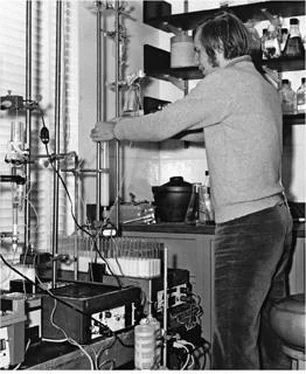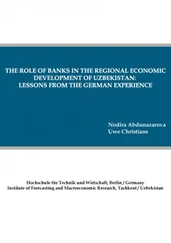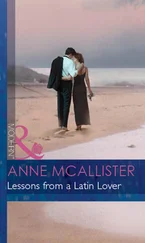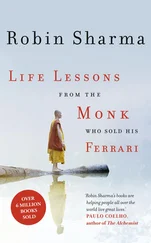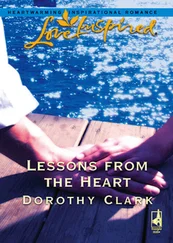James Watson - AVOID BORING PEOPLE - Lessons from a Life in Science
Здесь есть возможность читать онлайн «James Watson - AVOID BORING PEOPLE - Lessons from a Life in Science» весь текст электронной книги совершенно бесплатно (целиком полную версию без сокращений). В некоторых случаях можно слушать аудио, скачать через торрент в формате fb2 и присутствует краткое содержание. Жанр: Биографии и Мемуары. Описание произведения, (предисловие) а так же отзывы посетителей доступны на портале библиотеки ЛибКат.
- Название:AVOID BORING PEOPLE: Lessons from a Life in Science
- Автор:
- Жанр:
- Год:неизвестен
- ISBN:нет данных
- Рейтинг книги:5 / 5. Голосов: 1
-
Избранное:Добавить в избранное
- Отзывы:
-
Ваша оценка:
- 100
- 1
- 2
- 3
- 4
- 5
AVOID BORING PEOPLE: Lessons from a Life in Science: краткое содержание, описание и аннотация
Предлагаем к чтению аннотацию, описание, краткое содержание или предисловие (зависит от того, что написал сам автор книги «AVOID BORING PEOPLE: Lessons from a Life in Science»). Если вы не нашли необходимую информацию о книге — напишите в комментариях, мы постараемся отыскать её.
AVOID BORING PEOPLE: Lessons from a Life in Science — читать онлайн бесплатно полную книгу (весь текст) целиком
Ниже представлен текст книги, разбитый по страницам. Система сохранения места последней прочитанной страницы, позволяет с удобством читать онлайн бесплатно книгу «AVOID BORING PEOPLE: Lessons from a Life in Science», без необходимости каждый раз заново искать на чём Вы остановились. Поставьте закладку, и сможете в любой момент перейти на страницу, на которой закончили чтение.
Интервал:
Закладка:
Much of my second Caltech interval I spent converting my thesis into the first of two manuscripts for the Journal of Bacteriology. For a few days, I did experiments with a T5 mutant with a lengthened life cycle, but Max chided me that I was wasting my time in the absence of a defined experimental objective. So instead of hanging around the lab without real purpose, I was more frequently in the library or on the Athenaeum tennis court. For several days I was with George Beadle at Caltech's marine biology station, to which he had gone to collect invertebrate specimens. Then Renato and I climbed Mt. San Jacinto again, going through clouds to reach its treeless top, almost twelve
thousand feet above Palm Springs. Several days later, my mood suddenly turned serious with the start of the Korean War. But when I passed through Chicago on my way to Cold Spring Harbor, and then by boat to Copenhagen, my draft board offered no objection to my going abroad as long as I kept them informed of my address.At the Cold Spring Harbor phage meeting in late August, Salva was at ease about the setback to his multiplicity reactivation theory, no longer believing such experiments held vital clues about phage genes. His morale was again high, thanks to a new observation of the frequency of spontaneous mutants among individual bacteria, which he believed showed that genes duplicated by a process akin to binary fission. In contrast, Max still wanted to pull sense out of multiplicity reactivation curves, interpreting Renato's latest examples to suggest the possibility of two forms of DNA—one genetic, the other non-genetic. If phages were indeed so constructed, this might explain Lloyd Kosloff and Frank Putnam's finding at the University of Chicago that when DNA was tagged by introducing radioactive isotopes, only half the DNA of infecting phage particles is transferred to their progeny particles. Here Seymour Cohen pointed out that these radioactive progeny would only have their label in genetic DNA and would in turn pass 100 percent of their labeled DNA to second-generation progeny particles.
My mind turned again to potential second-generation experiments as soon as the seasickness-inducing vessel Stockholm docked in Copenhagen. There I found Kalckar keen that I focus instead on enzymes that make the nucleoside precursors of DNA. But after a week listening to Herman's almost indecipherable English, I saw that experiments with nucleosides would never get at the essence of DNA. I, however, could not figure out a graceful way to tell Herman that my time was better spent going back to phage experiments. Deciding to say nothing, I was soon cycling each day through the center of Copenhagen to the State Serum Institute, where Herman's friend Ole Maaloe was keen to follow up the private phage course given to him by Max at Caltech.
Long before we began producing second-generation results,
Kalckar's marriage suddenly collapsed. No longer enzyme-driven, Herman was obsessing about Barbara Wright, the feminine component of our calamitous camping trip to Catalina Island the year before. Like me, she was a new postdoc in Kalckar's lab, as was Günther Stent, who'd come from Caltech the month before. Delusionally believing Barbara's Ph.D. thesis had earth-shattering implications, Herman hastily arranged an afternoon get-together at the Institute for Theoretical Physics, where Günther and I listened to her explain her experiments to Niels Bohr. Herman then proudly acted as intermediary between Barbara, his putatively visionary biologist, and Bohr, the inarguably visionary physicist. After an hour passed, Bohr politely excused himself.By winter's end, Ole and I finished our experiments, getting the answer that the first-generation progeny transmitted DNA to their second-generation progeny no better than the parental particles. No evidence suggested the existence of two forms of DNA. Though this was not the answer we had hoped for, Max thought it sufficiently important to submit the resulting manuscript to the Proceedings of the National Academy. Soon Herman himself felt the need to absent himself from his lab, announcing that he and Barbara would spend April and May at the Zoological Station in Naples. Maintaining the facade that I was still his postdoc, Herman asked me whether I wanted to join him in learning more about the marine biology that Barbara had been raised on. Instantly I accepted, for I had no potentially exciting phage experiment on the horizon.
Just before I left Copenhagen, there was a small microbial genetics gathering to which came the Italian aristocrat Niccolò Visconti di Modrone, whose keen intelligence I had first witnessed the preceding August at Cold Spring Harbor. Just back in Milan from Caltech, Niccolò said I must stop off in his ancestral city to hear a performance at La Scala. Upon meeting my train from Copenhagen, he noticed that my rucksack held all my belongings, and deduced I was without a dark suit. So he arranged for us to go to the same Weber opera but on different nights. At the genetics department in the nearby small university town of Pavia, Niccolò and I bumped into Ernst Mayr, whom Niccolò also knew from Cold Spring Harbor. After we all visited the
ancient Certosa di Pavia, we had supper in the large farmhouse of Nic-colò's equally tall and good-looking brother, just back from China.
At the State Serum Institute in Copenhagen, 1951. Günther Stent is on the far left, Ole Maaloe is third from left, Niels feme is standing, and I am sitting in front of Niels.
I would have considered such acculturation alone ample justification for my spending two months in Italy, but a small, high-level meeting on macromolecular structure in the Zoological Station auditorium provided an even better excuse. Until that mid-May gathering in Naples, I had assumed no one would soon understand the detailed, three-dimensional structure of DNA at the atomic level. Since genetic information, which was encoded within DNA, varied, each different DNA molecule most likely presented a different structure to solve. But my pessimism, born of chemical naivete, lifted dramatically after a talk by the youngish King's College London physicist Maurice Wilkins. Instead of revealing disorganized DNA molecules, DNA in his X-ray diffraction pictures was yielding patterns consistent with crystalline assemblies. Later he told me that the DNA structure might not be that difficult to solve since it was a polymeric molecule
made up from only four different building blocks. If he was right, the essence of the gene would emerge not from the genetic approaches of the phage group but from the methodologies of the X-ray crystallographer.Despite my obvious excitement at his results, Maurice did not seem to judge me a useful future collaborator. So upon arriving back in Copenhagen, I wrote Salva seeking help in finding another biologically oriented crystallographic lab in which I could learn the basic methodologies of the structural chemist. Salva delivered after a meeting in Ann Arbor at which he met the Cambridge University protein crystallographer John Kendrew. Then just thirty-four, John was seeking an even younger scientist to join him. With Salva having spoken well of my abilities, he agreed to my coming aboard to learn crystallographic methodologies from him and his colleagues at the recently established Medical Research Council (MRC) Unit for the Study of Structure of Biological Systems.
By then I was again studying the transmission of radioactive labels from parental to progeny phages, knowing that early in September Max Delbrück was coming to Copenhagen for an international poliomyelitis conference. When his ship arrived, Günther, Ole, and I went to the Copenhagen dock to greet Max with a large poster saying “Velkommen Max Mendelian Mater.” The congress itself was a routine affair except for dinner at Niels Bohr's home within the Carlsberg Brewery. Its founder had long before arranged that his opulent domicile should always be occupied by Denmark's preeminent citizen. Luckily, I was not seated near Bohr, who was likely to be expressing thoughts that no one around him, Danish or foreign, could understand.
Читать дальшеИнтервал:
Закладка:
Похожие книги на «AVOID BORING PEOPLE: Lessons from a Life in Science»
Представляем Вашему вниманию похожие книги на «AVOID BORING PEOPLE: Lessons from a Life in Science» списком для выбора. Мы отобрали схожую по названию и смыслу литературу в надежде предоставить читателям больше вариантов отыскать новые, интересные, ещё непрочитанные произведения.
Обсуждение, отзывы о книге «AVOID BORING PEOPLE: Lessons from a Life in Science» и просто собственные мнения читателей. Оставьте ваши комментарии, напишите, что Вы думаете о произведении, его смысле или главных героях. Укажите что конкретно понравилось, а что нет, и почему Вы так считаете.
